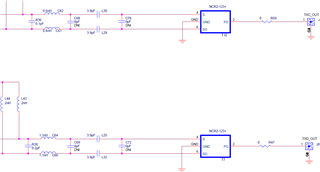Other Parts Discussed in Thread: , TRF1208
Tool/software:
The AFE datasheet provides characterization data for various configurations including 12GHz input clock and 9.6GHz RF

The evaluation modules give good reference circuitry for the single ended to differential conversion but unfortunately for this configuration.



Could you provide guidance for the 12GHz Fref and 9.6GHz RF case based on the implementation used to characterize the device in the datasheet?



